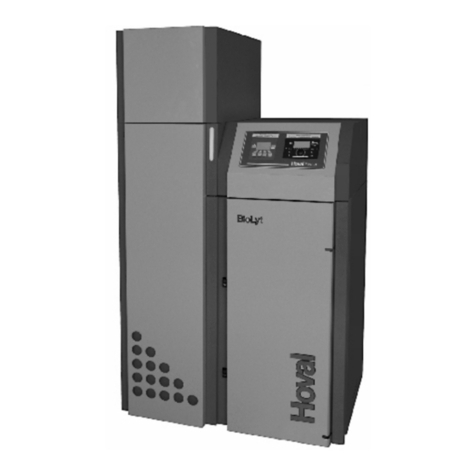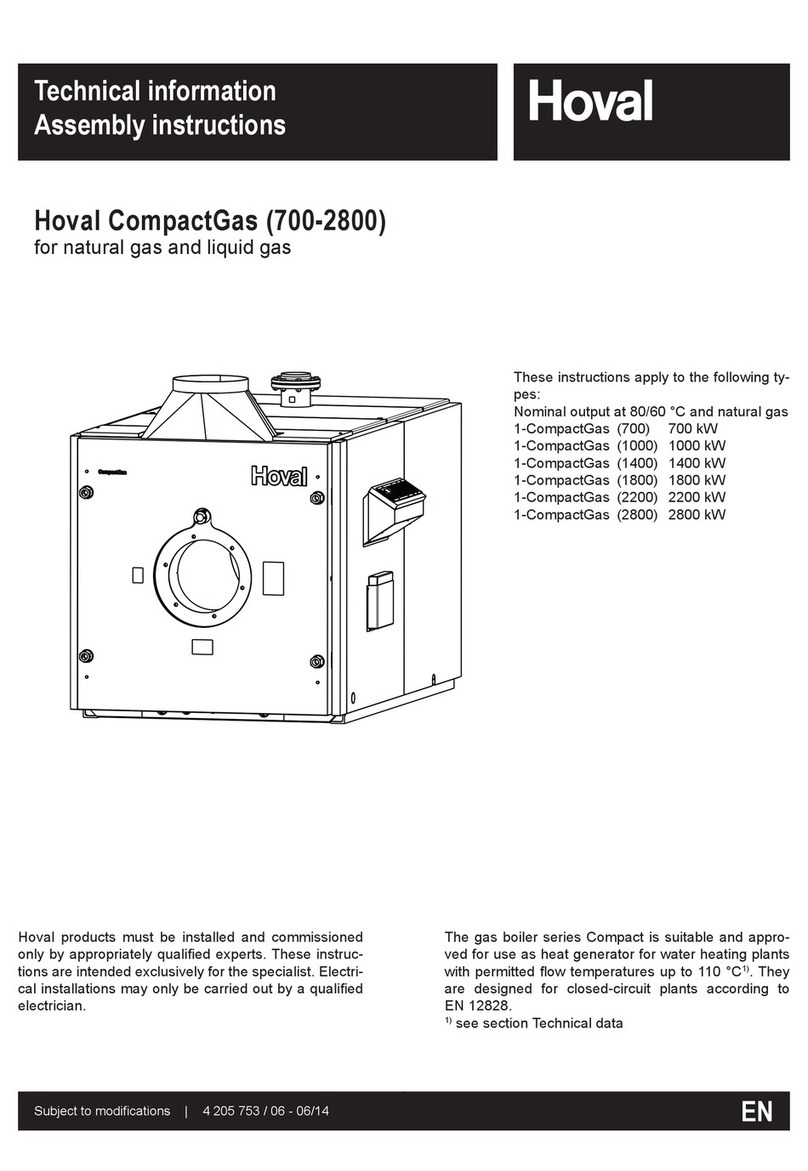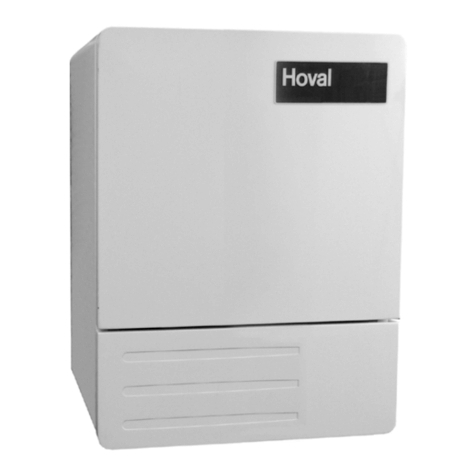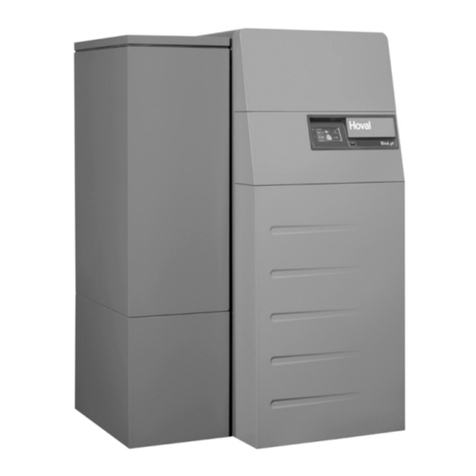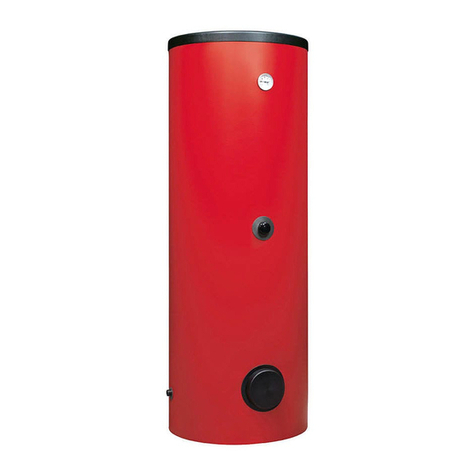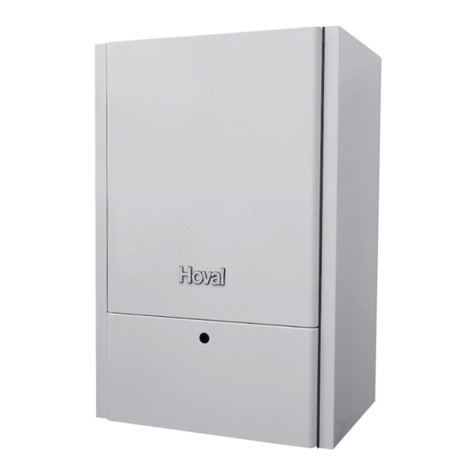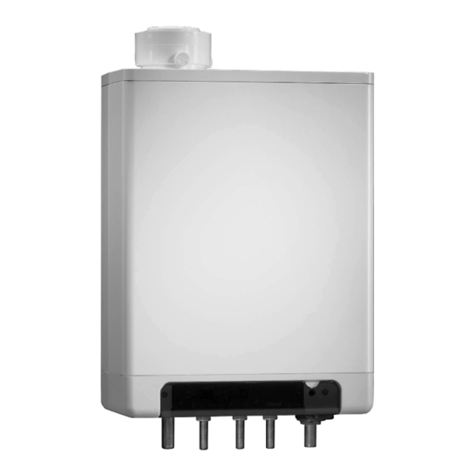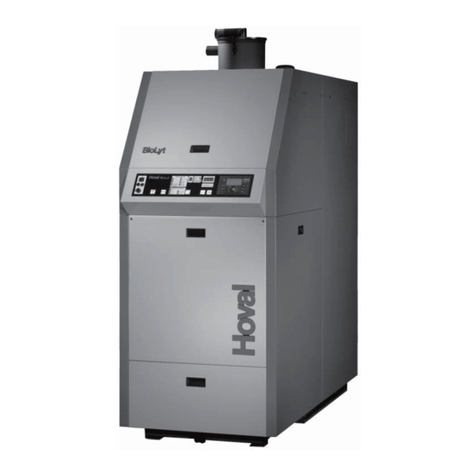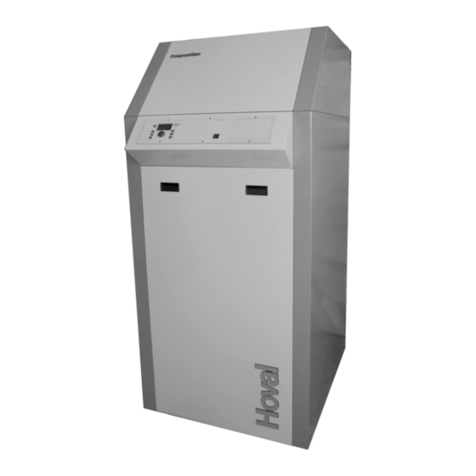10
Boilerhouse Ventilation
Natural Ventilation - General Guidelines
The permanent ventilation of the boilerhouse
(not including doors and windows which may be
closed) is essential.
Boilerhouse ventilation serves two essential
purposes. One is to permit combustion air to ow
freely to the burners from outside the building and
the second is to maintain a clean atmosphere
within the boilerhouse at a reasonable temperature
level.
Heat released from the boiler, the piping and
the ues should not increase the boilerhouse
temperature above 30oC.
Air Inlet Requirements
It is essential that xed air openings are provided
at high and low level adjacent to the boiler front.
Free inlet area of louvres required for ventilation
and combustion air should not be less than
640mm2/kW rating (30in3 per therm) (1m2per
1500kW boiler rating). The inlet opening should
be at low level with a further ventilation opening
of half that area at high level.
Air inlets and ventilation outlets are best disposed
at low level and high level respectively, so that
air convection across the boilers will create the
necessary air changes.
Boilerhouse ventilation should
conform with the relevant British
Standards, Codes of Practice etc.
Preferably the high level openings should not be
too close to the low level opening such that short
circuiting of air, without ventilation across the
boilers, can occur. Where louvres are utilised in
the boilerhouse door, louvres over the full door
height are satisfactory.
For boilerhouses below ground level, arrangements
should be made to induce fresh air into the
boilerhouse where a natural ow of air is restricted
by the buoyancy of air leaving higher level
openings.
Air Supply by Mechanical Ventilation - General
Guidelines
The supply of air to a space housing the boiler
by mechanical means should be mechanical inlet
with natural or mechanical extraction. Mechanical
extract ventilation with natural inlet must not be
used.
Any mechanical means of entering air into a
basement boilerhouse should have a balancing
outlet so that the air pressure in the boilerhouse
does not exceed 0.05" W.G. (12.5 Pa).
Where mechanical inlet and mechanical extract
system is applied, the design extraction rate
should not exceed one third of the design inlet
rate.
Note: All air inlet and extract fans should be tted
with automatic controls interlocked with the boiler
controls to give a safe shutdown or lockout in the
Open Vented / Pressurised Systems
Open Vented Systems
A primary make up water and expansion tank is
required for open vented systems. With low head
on calorifier primary system, Hoval Technical
Department should be consulted.
The cold feed pipe should be connected into the
return water piping on the boiler side of any valve.
An open vented connection is provided at the
boiler rear. The vent pipe should be installed with
a continuous rise to a position over the primary
feed tank.
A safety valve should be installed in a tee piece as
near to the boiler as possible with no intervening
valve. It should be sized to the relevant British
Standard.
Pressurised Systems
For independently pressurised systems the vent
connection must be tted with an automatic air vent,
a safety valve (sized to the relevant British Standard)
and a pressure switch. No intervening valve is
permissible between the safety valve and boiler.
The pressure switch should be interlocked with the
boilers control circuit to safely close the burner down
in the event of pressure loss.
The pressurisation unit control should also be
interlocked with the boiler(s) controls to safely close
the burner down in the event of malfunction.
Hoval recommend that a Level Probe Switch is tted
in the ow pipe rising from the boiler. It should be
drained down for proving its operation periodically. It
should be interlocked with the burner control system.
Ventilation, Open Vented & Pressurised Systems


